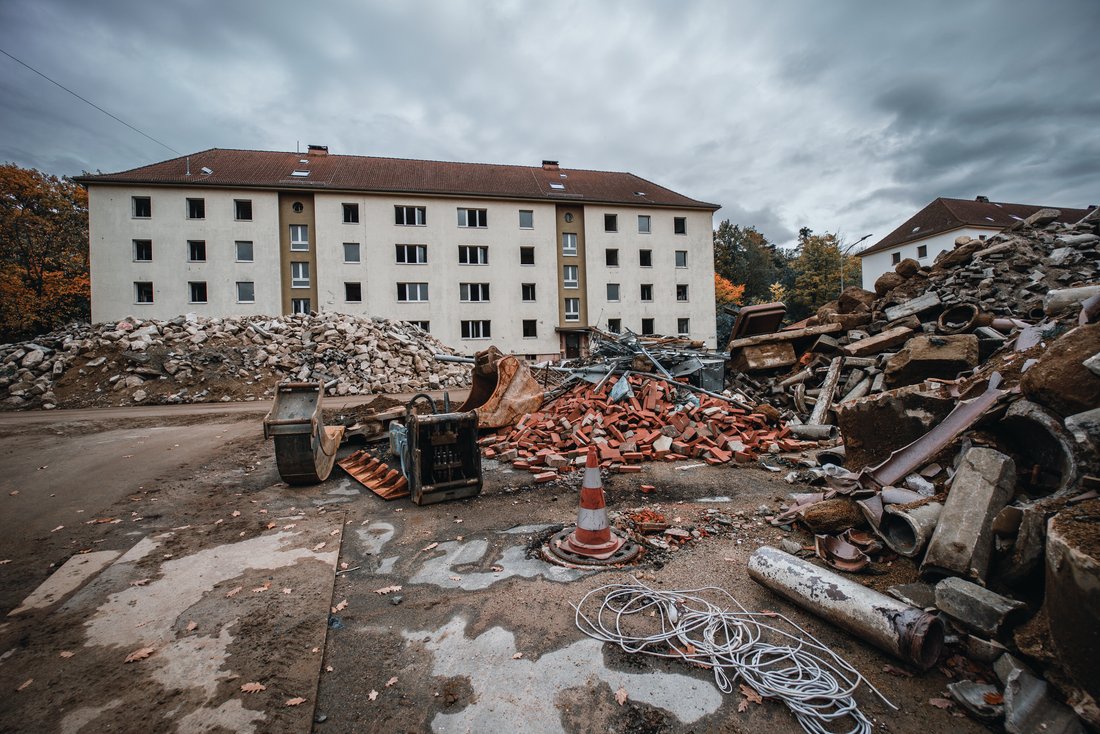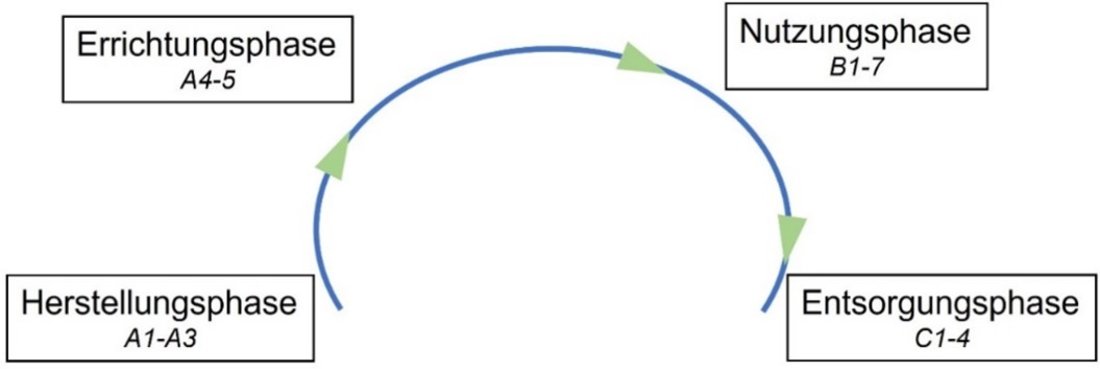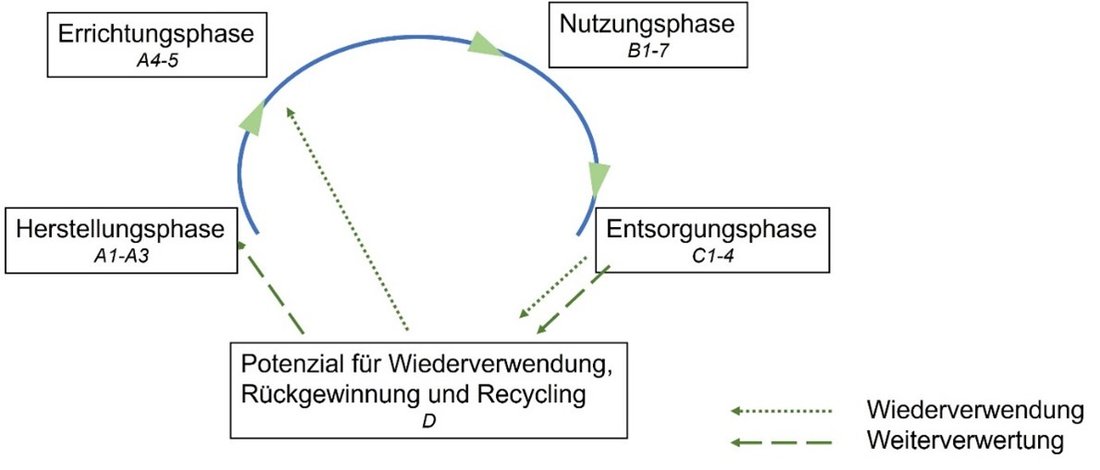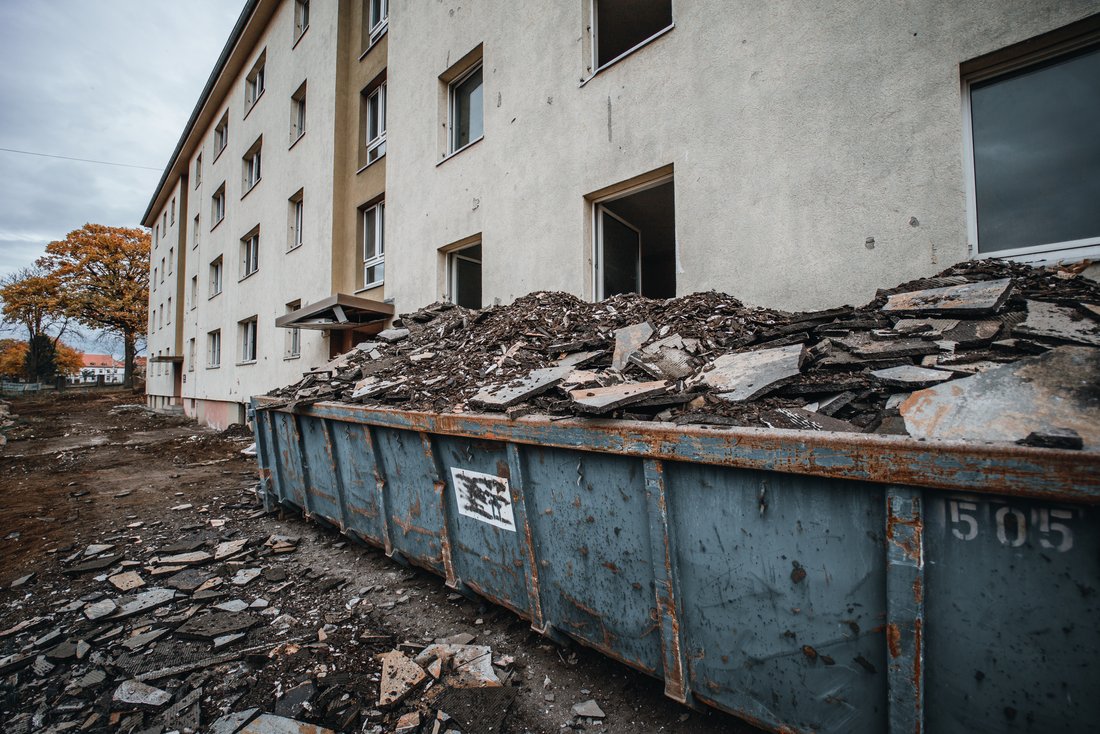Embodied energy and Cradle to Cradle (C2C)
Life cycle analysis (LCA) in construction
Efficiency improvements in the building sector are not enough to achieve the reduction targets set out in the Paris Agreement. The energy required for the manufacture, construction, use and disposal of building products must also be accounted for in order to decarbonize the building sector in the long term.
The life cycle analysis (LCA) method - also called `life cycle assessment´ - makes it possible to quantify the environmental impact of a product and compare it with other products. At each stage, resources are extracted from nature; this has a direct impact on the environment. In the sense of life cycle assessment, environmentally compatible products may be identified already in the planning phase with the help of life cycle analysis.
Life cycle assessment and embodied energy
In life cycle assessment, one also often speaks of embodied energy. According to the Swiss Association of Engineers and Architects (SIA), embodied energy is defined as follows: "Embodied energy is the total amount of non-renewable primary energy required for all upstream processes, from raw material extraction to manufacturing and processing, and for disposal, including the necessary transport and auxiliary materials. The embodied energy is calculated from the sum of all non-renewable primary energy sources and energetically usable fossil raw materials.
Recycling of building materials and Cradle-to-Cradle (C2C)
To ensure that a building product can continue to be used after its life phase in the building, it is important to take the recycling aspect into account right from the planning stage. When this is done, the term cradle to cradle is used. In this approach, buildings are designed in a way that allows as many or even all of the building products to be reused as possible. For example, it is possible to exclude toxic substances from use on principle. In addition, the recycling rate of the building product is determined on the basis of the proportion of recyclable or compostable materials and the amount of already recycled or rapidly renewable raw materials. A building example of this is "The Cradle" in Düsseldorf, which is currently under construction. Here, the materials used are documented in a so-called material passport, so in order to be able to recycle them better. https://www.the-cradle.de/
Redevelopment goes before demolition
In order to reduce the use of embodied energy in the long term, building refurbishment should be preferred to demolition. The building stock is also referred to as the anthropogenic raw material stock, which has been growing continuously since the Second World War and is estimated at 15 billion tons in Germany. Concrete accounts for the largest share, followed by other mineral materials (including floor coverings) and bricks. All three building materials emit enormous amounts of carbon dioxide (CO2) during new production. The `Atlas Recycling´ shows ways and methods how these can be saved by recycling or refurbishment of existing buildings. We at goodmen energy recommend the installation of ecological building materials and point out the recyclability of building structures and plant technology.
Life cycle assessment will (have to!) play an increasingly important role in the construction sector in the future. The construction of a sustainable building is already massively promoted today. The KfW (Kreditanstalt für Wiederaufbau, a German development bank), for example, gives additional funds for buildings if a sustainability certification is carried out. In addition, many municipalities promote the use of ecological building materials. Life cycle assessment and cradle-to-cradle awareness will increasingly be incorporated into legal requirements in the future.
Recommended action
- Renovation instead of demolition and new construction
- Use of ecological building materials
- Development of simple TGA concepts (technical building equipment)
- Use of renewable energies and energy-efficient building technology
- Consideration of the recyclability of building structures and systems engineering
- Forward-looking planning in order to be able to flexibly design the use of a building in the future
- Making use of federal and local government subsidies






